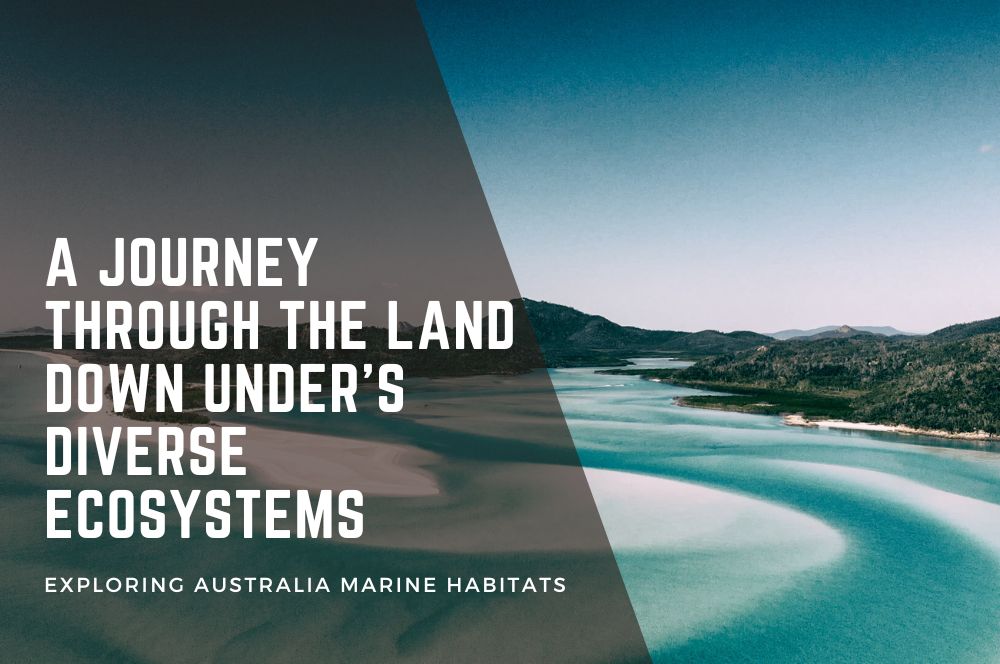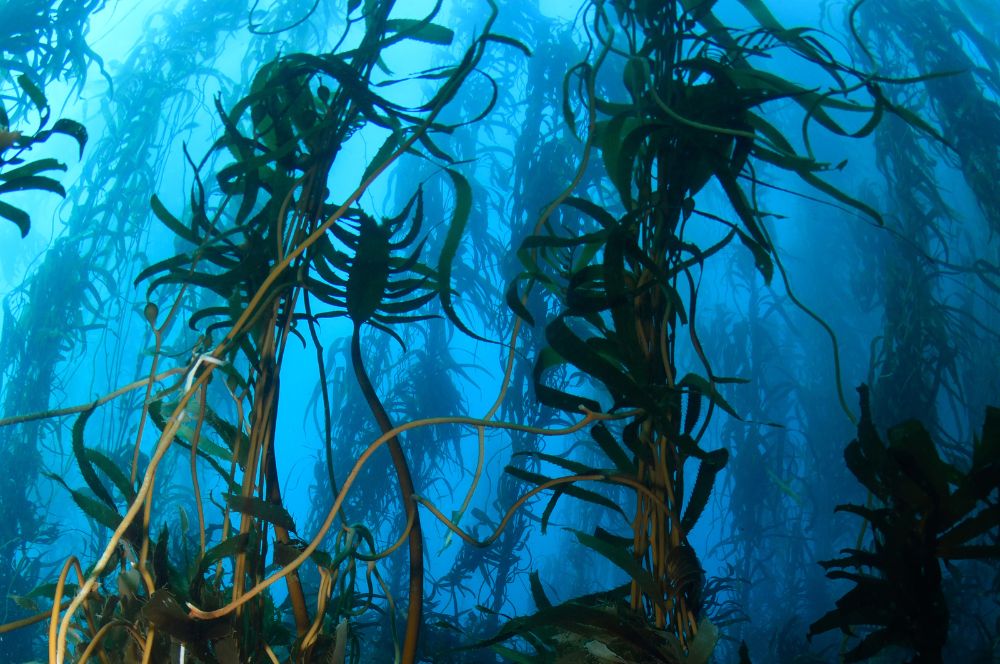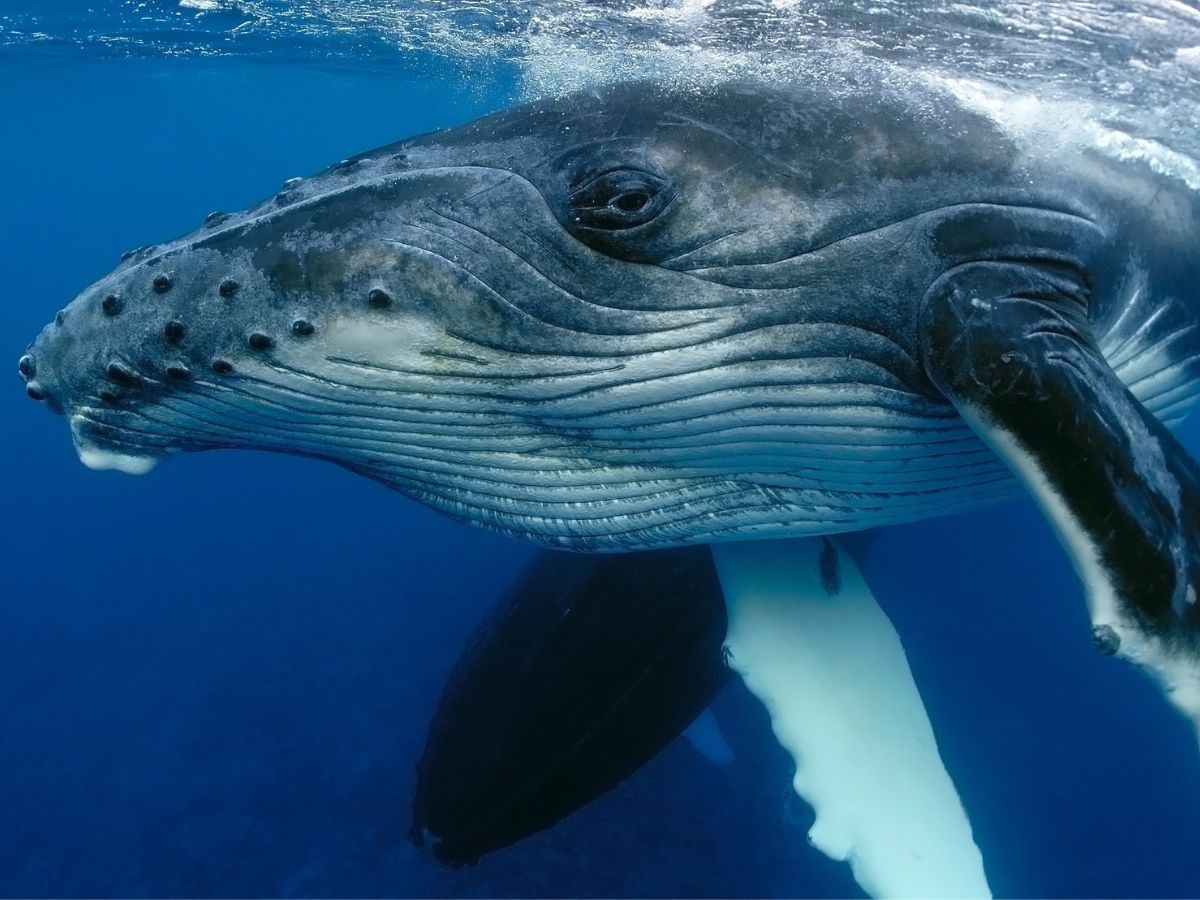You have 0 product(s) in your cart.
Abyss Scuba Diving
Australia's Marine Wonders: Dive Into Diverse Ecosystems

Exploring Australia: A Journey Through the Land Down Under's Diverse Ecosystems
Australia’s shores are the gateways to unparalleled marine diversity. This journey surveys the country’s famed Great Barrier Reef, the remote Ningaloo, and the secret underwater gardens, highlighting the complex ecologies and dedicated conservation of these aquatic paradises. Prepare to embark on a tour of Australia’s most astonishing marine habitats, where protection and natural splendor go hand in hand in Australia.
Key Takeaways
-
The Great Barrier Reef and Ningaloo are both iconic diving locations in Australia, offering unique marine life experiences, but are also at the center of extensive conservation efforts utilising local and global resources to combat pollution and preserve biodiversity.
-
Australia’s underwater environments extend beyond coral reefs to include kelp forests, seagrass meadows, and sponge gardens, which are critical for biodiversity and provide vital ecosystem services, necessitating protection and conservation initiatives.
-
The country’s marine biodiversity is under threat from climate change and human activities, highlighting the need for continued conservation efforts and responsible tourism to protect unique species and habitats, such as the northwest oceanic shoals and marine life like kelp forests.
Diving into the Depths of the Great Barrier Reef

We commence our exploration at the Great Barrier Reef, the world’s largest coral reef and the most expansive coral reef system. Stretching over 2,300 kilometers along the coast of Queensland, the reef offers a stunning array of underwater activities, from snorkeling and scuba diving to glass-bottomed boat viewing. A myriad of multicolored fish, sea turtles, and reef sharks welcome divers, forming a sanctuary for marine life.
However, the reef is not merely a spectacle; it is a living entity that necessitates our care and protection.
Iconic Dive Spots
Some of the world’s most iconic dive spots, celebrated for their breathtaking coral gardens and diverse marine life, find their home in the Great Barrier Reef. The Whitsunday Islands, an aggregation of 74 tropical islands, offer a spectacular diving experience. These islands feature coral pinnacles and underwater cliffs that support marine life such as manta rays and batfish.
On the southern part of the reef, the Capricorn and Bunker reefs stand out with their shallow waters vibrant with marine life. Islands like Lady Elliot and Lady Musgrave are known for their fascinating coral canyons and marine turtles. Each dive site presents a unique underwater world, offering diverse experiences and encounters.
Conservation in Action
The preservation of the Great Barrier Reef extends beyond retaining natural beauty; it involves safeguarding a vital ecosystem and a livelihood source for many. The Queensland government has invested over $1 billion since 2015 in various conservation initiatives to ensure the long-term health and survival of the reef.
The Reef 2050 Long-Term Sustainability Plan is a comprehensive strategy that encompasses efforts from local, national, and global fronts up to the year 2050, including federal environment protection measures. Local communities, industries, and agricultural producers are involved in projects to reduce water pollution and improve the reef’s water quality, while considering the impacts of population growth.
Traditional Owners, with an enduring connection to the Great Barrier Reef spanning over 60,000 years, also share their valuable knowledge and experience to support conservation efforts of this world heritage site.
Encounters with Marine Giants
Some of the ocean’s most magnificent creatures reside in the Great Barrier Reef. Among them are whale sharks, the world’s largest fish, often spotted in the reef’s waters, these gentle giants can grow up to 12 meters in length. Imagine swimming alongside these majestic creatures in the clear waters of the Coral Sea.
The reef also witnesses the annual migration of humpback whales. Thousands pass through during their breeding season, displaying unique behaviors such as breaching and tail-slapping. Other marine giants that can be encountered include the massive Tridacna gigas, a species of giant clams, and manta rays with wingspans of up to 7 meters. Green sea turtles, though not as large, are an iconic part of the reef’s ecosystem.
Ningaloo Reef: Western Australia's Underwater Treasure

Transitioning from the east coast, we venture to the remote coast of Western Australia, the location of the immaculate Ningaloo Reef. Known for its unspoiled coral formations and crystal-clear waters, Ningaloo offers a rugged and remote underwater world that is distinct from the Great Barrier Reef found on the north east coast.
Operated by locals dedicated to the reef’s conservation, Dive Ningaloo offers specialized tours catering to both diving and snorkeling enthusiasts, providing a unique and comfortable diving experience.
Swimming with Whale Sharks
Swimming with whale sharks during their annual migration ranks as one of the most thrilling experiences at Ningaloo Reef. Imagine diving into the clear waters and coming face to face with these gentle giants. This annual migration transforms Ningaloo Reef into a prime location for a memorable marine experience.
An array of tour operators like Dive Ningaloo and Ningaloo Whale Shark Swim offer snorkel tours and unique experiences such as aerial spotting and extended time swimming alongside the whale sharks. These encounters with the world’s largest fish are not just thrilling but also an opportunity to appreciate the majesty of marine life.
Coral Cays and Diversity
Ningaloo Reef is not all about whale sharks; it’s also a hotspot of marine biodiversity. The coral cays of Ningaloo Reef provide essential habitats that host a multitude of marine species. Researchers from The University of Western Australia have used baited underwater cameras to document the marine biodiversity at Ningaloo Reef, capturing a variety of fish species.
In addition to the coral cays, Ningaloo’s underwater sponge gardens are rich ecosystems home to large sponges, sea whips, and species such as the giant cuttlefish, adding to the reef’s diverse marine life. Each dive in Ningaloo offers a chance to experience this unique marine biodiversity.
Responsible Tourism
The balance of human activity and preservation efforts maintains the beauty and biodiversity of Ningaloo Reef. Various eco-tourism initiatives and federal environmental protection measures promote sustainable diving experiences, ensuring that the enjoyment of today’s visitors does not compromise the reef’s future.
The Ocean Guardians Program, recognized by UNESCO, plays a significant role in the educational outreach of Ningaloo Reef, aiming to inspire a future generation dedicated to the preservation of ocean ecosystems.
Australia's Secret Underwater Gardens

Let’s now shift our exploration to the secret underwater gardens of Victoria. Unlike the popular reefs, these tranquil diving spots are known for their seagrass meadows and kelp forests, offering a serene environment that tells a unique story of resilience and adaptation among marine plant species.
Seagrass Meadows and Kelp Forests
Kelp forests and seagrass meadows play crucial roles in marine ecosystems. These underwater gardens flourish in shallow ocean waters along one-third of the planet’s coastlines, hosting a wealth of biodiversity and yielding extensive economic benefits.
Annually, kelp forests are estimated to deliver approximately $500 billion worth of ecosystem services, including supporting fisheries, facilitating nutrient cycling, and aiding in the removal of carbon. Victoria’s Marine National Parks and Sanctuaries enact stringent protections to safeguard these diverse marine ecosystems, which encompass the abundant seagrass meadows and kelp forests essential for maintaining rich biodiversity.
Hidden Hotspots
Hidden diving hotspots also find a place in Australia’s underwater gardens. Wonder Reef off the Gold Coast boasts nine buoyant underwater sculptures that act as an artificial reef, drawing in a diverse range of marine species. Sydney’s dive sites include hidden treasures such as Kurnell, Henry Head, Oak Park, and Bare Island, renowned for their vibrant sponge gardens that support a wide variety of marine life.
Victoria’s hidden diving hotspots like Beware Reef Marine Sanctuary and Ricketts Point Marine Sanctuary offer unique encounters with local marine life amidst distinct underwater terrains. In addition to marine life diversity, some of these diving locations are also celebrated for encompassing heritage-listed shipwrecks, adding to their allure as secret diving locations.
Majestic Marine Megafauna Encounters

In addition to reefs and underwater gardens, the waters of Australia provide encounters with some of the ocean’s most splendid creatures. Whether it’s swimming alongside gentle whale sharks or diving into the depths to catch a glimpse of a lurking predator, each encounter is a testament to the richness of Australia’s marine life.
Diving with Predators
For those seeking a thrill, Australia offers several iconic destinations for diving with sharks. Some of these include:
-
The Neptune Islands in South Australia, which provide cage diving with Great White Sharks, offering a thrilling opportunity for close-up observations.
-
South West Rocks in New South Wales, where Grey Nurse Sharks can be encountered all year round.
-
Wolf Rock, Rainbow Beach, where Grey Nurse Sharks can also be found.
-
The Gold Coast, where divers can meet Woebegone and Leopard Sharks, particularly during the summer months.
Promoting responsible and sustainable shark diving practices is essential for the conservation of these magnificent creatures and their natural environment. Sharks play a crucial role in maintaining the balance of marine ecosystems, and diving with them can be an insightful and impactful experience.
Gentle Giants of the Deep
Australia’s waters are not only home to predators but also to gentle giants. Swimming with humpback whales in Australia offers an unforgettable experience, where tourists can get up close to these majestic creatures in their natural environment. These encounters provide:
-
An economic incentive to local communities, bolstering conservation efforts and helping to protect these gentle giants
-
An educational aspect, teaching people about whale behavior
-
Profound emotional responses from the awe-inspiring interactions
It’s important to remember, however, that interactions with humans have the potential to affect humpback whale behavior and biology, although studies are ongoing to fully understand this impact.
Mysteries of the Deep: Caves and Caverns

We now delve deeper into the enigmas of Australia’s underwater caves and caverns, a hidden part of the natural world. These geological wonders offer a glimpse into the earth’s ancient past.
Cave diving, especially in the Nullarbor Plain, presents divers with a chance to navigate through crystal-clear waters amidst impressive geological formations.
Cave Diving Adventures
The Nullarbor Plain in Australia houses extensive underwater cave systems, known for their large subterranean lakes and some of the longest underwater tunnels globally. Within these caves, divers can find clear blue-green lakes with depths reaching up to 100 meters, offering unique cave diving experiences.
However, navigating these subterranean waterways is not without risks due to their complexity and isolation. The captivating story of the 1988 Pannikin Plains Expedition, a major undertaking to explore the Pannikin Plains Cave, highlights the potential dangers. The expedition ended dramatically with a cyclonic storm causing a flood and entrapping the divers inside.
Despite the risks, these caves serve as a gateway into the earth’s ancient past, with recent explorations unveiling new sections of the cave system.
Geological Wonders
Underwater caves beneath the Nullarbor surface are formed from limestone, a rock that can be slowly dissolved by slightly acidic water, leading to the creation of vast cave systems. These caves exist in stark contrast to the arid desert above, illustrating the geological diversity and evolution these formations have undergone through time.
These limestone caves often host unique ecosystems, containing life forms that have adapted to the dark, isolated environments within. Understanding and protecting the delicate balance of the ecosystems in these underwater caves is crucial for conserving the geological and biological diversity they represent.
Hotspots of Marine Biodiversity
The marine biodiversity of Australia is both diverse and awe-inspiring. The northwest oceanic shoals of Australia are submerged deep-sea structures known for their remarkably high fish diversity, rivaling that of the Great Barrier Reef. However, despite their richness and potential as refuges during warming events, these ecologically diverse shoals face threats from industrial activities such as oil and gas exploration and commercial fishing. It is crucial for the Australian government to take measures to protect these valuable ecosystems.
Unique Species and Habitats
Australia’s underwater gardens, like the sponge gardens near Sydney, are complex ecosystems that provide habitat structures fostering marine biodiversity akin to that of coral reefs. These sponge gardens are instrumental in marine ecosystems, functioning in nutrient cycling and providing structured habitats, roles similar to those of terrestrial plants and mangroves.
Sponges play a pivotal role in the underwater food chain by filtering water and offering habitats to a diversity of smaller marine organisms. This highlights the integral relationship between different species and habitats in maintaining the balance of marine ecosystems.
The Impact of Climate Change
Climate change signifies a substantial threat to Australia’s marine ecosystems. It can disrupt the symbiotic relationships crucial for the survival of diverse marine species. Kelp forests in Australia are experiencing rapid decline due to climate change, with regions like Tasmania losing up to 95% of their kelp canopy.
If marine life, including threatened species and endemic species, is not protected from destructive human activities, such as marine debris, the oceans face a potential ‘sixth mass extinction’. This stark reality underscores the urgent need for global action to mitigate climate change and protect our precious marine ecosystems from the impacts of rising sea levels.
Summary
Our journey through Australia’s diverse marine ecosystems has taken us from the vibrant Great Barrier Reef to the serene underwater gardens of Victoria, from thrilling encounters with majestic marine megafauna to the mysteries of the deep in underwater caves and caverns. We’ve seen the richness of Australia’s marine biodiversity and the unique species and habitats that make up these ecosystems.
However, we’ve also seen the threats these ecosystems face from human activities and climate change, underscoring the urgency of conservation efforts. It’s our responsibility to protect these precious ecosystems, not just for the marine life that depends on them, but for the entire planet. As we continue to explore and learn about these underwater wonders, let’s also commit to their protection and preservation, for today’s enjoyment and for the future generations.
Frequently Asked Questions
What are some of the iconic dive spots in the Great Barrier Reef?
The Great Barrier Reef's iconic dive spots include the Whitsunday Islands and the Capricorn and Bunker reefs, offering diverse underwater landscapes and marine life.
How are the Great Barrier Reef and Ningaloo Reef different?
The Great Barrier Reef is the world's largest coral reef system, located on the east coast of Australia, while Ningaloo Reef is off the remote west coast, known for its unspoiled coral formations and clear waters.
What are the underwater gardens of Australia?
The underwater gardens of Australia refer to the seagrass meadows and kelp forests found in Victoria's marine national parks and sanctuaries, known for their unique story of resilience and adaptation among marine species.
What marine megafauna can be encountered in Australia's waters?
In Australia's waters, you can encounter a variety of marine megafauna such as whale sharks, grey nurse sharks, leopard sharks, humpback whales, manta rays, and green sea turtles. Enjoy the diverse marine wildlife when exploring the ocean.
What is the impact of climate change on Australia's marine biodiversity?
The impact of climate change on Australia's marine biodiversity is significant, as it disrupts crucial symbiotic relationships and has led to a rapid decline in kelp forests, with Tasmania losing up to 95% of its kelp canopy. If marine life is not protected from destructive human activities, it could lead to a potential 'sixth mass extinction'.
Recent Posts






